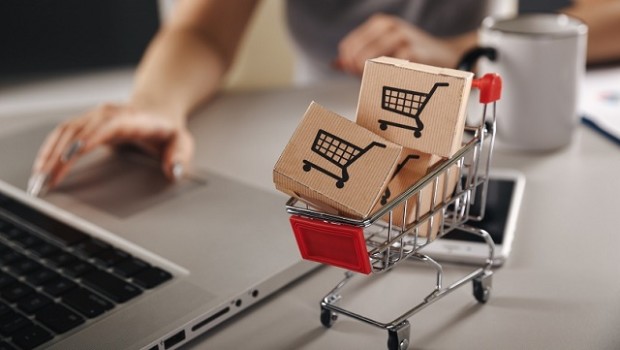

Like many of you, I have watched in disbelief as the impacts of COVID-19 continue to unfold in Australia. This is driving heightened levels of anxiety and rapidly changing customer confidence in the market.
Our government took the decision last week to close down non-essential services to improve social distancing as part of a phase 2 response. You will have seen that, over the weekend, additional restrictions were applied to further limit the spread of the virus. Victoria has entered phase 3 of its response.
These policy decisions will continue to have dramatic impacts on businesses across Australia. These impacts, however, are likely to differ based on the specific sector and also the business model employed. For example, the luxury sector is heavily impacted, as consumers focus on primary needs, while traditional businesses like pubs and clubs (with physical-only venues) have been forced to close.
Conversely, omnichannel businesses are thriving as customers shop for electronics and home office equipment. Sales are currently up 9.4 per cent on last year even with the huge reduction in retail footfall.
As a result of these impacts, the natural expectation is that businesses with an e-commerce channel (omnichannel retailers and digital pureplays) will have a ready-made answer to the reduction in traditional retail footfall.
However, the rapid scaling of e-commerce channel operations presents several challenges within the current COVID-19 environment, which retailers must manage carefully. This article seeks to define and explain some of the challenges facing businesses as they respond to the market dynamics.
Digitalising core values
Omnichannel retailers like JB Hi-Fi already have an e-commerce channel which will be more heavily utilised if store operations can no longer continue. However, these businesses often have a value proposition, which is far more aligned to the store experience than the digital one.
For instance, JB Hi-Fi is centred around providing great brands at great prices with expert advice and recommendations to its customers via its in-store employees. This is not yet mirrored online and means that consistent trade volumes cannot be simply expected to transition directly to the e-commerce channel. Businesses like this need to think carefully and act swiftly to ensure that customers can still access the same value – help, support, recommendations and product comparisons – digitally when their primary sales channel is removed.
Product and inventory
Retail supply chains remain under immense strain as customer demand for certain products, such as medical items and hand sanitiser, continue to increase, according to reports from Nielsen. A complicating factor is that several of these product groups are imported from China, which has seen major impact to its manufacturing and distribution industries. This is creating supply issues to a large proportion of Australian businesses. It therefore creates some notable areas of focus for retailers:
Ensuring real-time inventory management online so that customers have confidence around what products are available, and businesses don’t need to manage over-selling via already strained customer service centres;
Reallocating inventory to e-commerce channels. For omnichannel retailers that remain open but see a drop in traditional store footfall, inventory must be reallocated to the e-commerce channel in order to meet demand;
Ensuring product listings contain all relevant information for customers to aid discovery and selection. For instance, the country of origin may be far more important to customers now than it was 12 weeks ago;
Providing access to premium services to manage customer expectation. For instance, many retailers have provided free premium delivery services.
For more sophisticated retailers that utilise “dark stores” to fulfil e-commerce orders and have enterprise e-commerce operations, this process should be almost business as usual. However, for smaller retailers that may pick orders live from within their store networks, these changes (particularly inventory management) need to be implemented swiftly.
Health and safety
Finally, and most importantly, is the health and safety of customers and employees. Large e-commerce businesses are supported by a large number of teams and partners across fulfilment and logistics – all of which are impacted by social distancing measures. In the US, Victoria’s Secret and T.J. Maxx have already temporarily closed down their e-commerce channel, citing the need to protect workers in those operations and with the goal of slowing down the spread of the disease.
A really interesting example of innovation in this space is from China. As they move through the COVID-19 pandemic, its fast-food businesses have introduced temperature checks on their staff. This means that customers are told the body temperature of the person who prepared their meal and the one who delivered it. This innovation has reassured anxious customers and it’s also meant that some restaurants and fast-food outlets have been able to weather the storm.
Applying this to Australia, e-commerce businesses need to work closely with internal teams and logistics companies such as Australia Post to implement safe working practices. For example, food delivery service Hello Fresh has implemented contactless delivery protocols alongside strict hygiene guidance. All of this supports increased consumer confidence in the safety of e-commerce products and deliveries.
Ultimately, this presents an opportune time for businesses to invest in their e-commerce channels to build sustainable revenue streams in the short to medium term. Innovation and agility will be key as businesses make rapid decisions to protect employees and sustain their top line.
Strategic investment in building omnichannel capability at this time could see businesses exit this crisis in a stronger trading position, providing the impacts of COVID-19 lessen in the next three to six months.
Neil Kelly is a partner at Wunderman Thompson Australia and specialises in digital consulting and product strategy.
This story first ran in Inside Retail Weekly. Given the current crisis, we have decided to unlock all premium content related to COVID-19. If you would like to support Inside Retail, please consider subscribing here.

